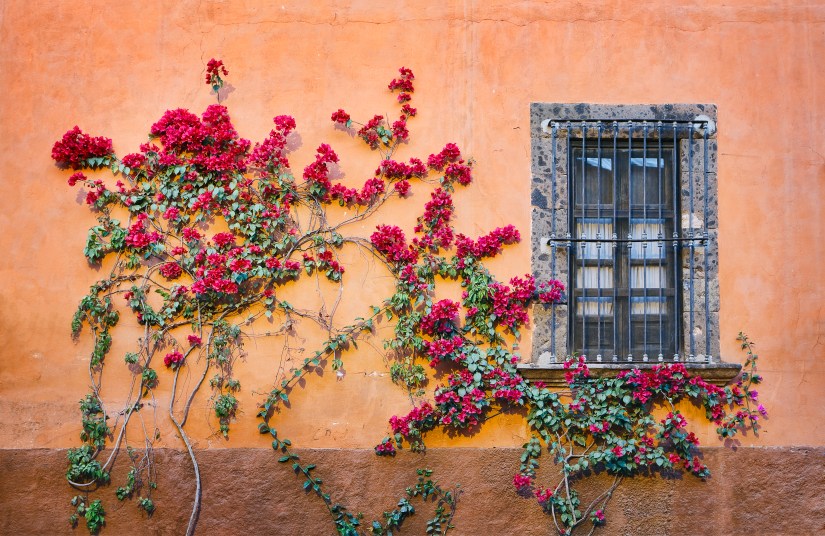How to Grow The Best Climbing Plants This Spring

Bare wall? Ugly fence? Hot house in summer that needs shading? Climbing plants solve all these issues, transforming your problem into a lush cascade of green that can provide months of color and fragrance. The best climbers need to suit your purpose, so consider whether you’d like an evergreen cover or to let the winter sun in through, say, a pergola.
Gardening expert Meredith Kirton shares her favorite climbers and creepers for every season.
Winter Climbers
It’s impossible to walk past the orange trumpet vine (Pyrostegia) without doing a double-take. The bright flowers literally smother the whole plant in an orange cascade for many weeks over winter. It’s great for full sun, loves the tropics (hates the cold) and can easily cover many meters, making it a terrific climbing plant for fences. Initial support is needed to help it get started.
If orange isn’t your colour, perhaps try a dash of sunshine with Carolina jasmine (Gelsemium). This attractive climber won’t outgrow its welcome and its yellow flowers appear in late winter and spring and then again in autumn. It has evergreen glossy foliage and suits all climates.
Flowering Climbers
Springtime overwhelms us for choice with jasmine, wisteria, climbing roses, and honeysuckle, all of which are suitable for most of Australia, with the exception of the tropics. If you’re in a cold area, clematis is a beautiful spring plant.
Shade-Loving Climbers
Chinese star jasmine (Trachelospermum jasminoides) grows in deep shade as well as full sun and won’t disappoint with its fragrant display of white lace-like flowers in spring and summer. The glossy green foliage looks good all year round, and for different foliage effects there are also two variegated forms: ‘Variegata’, with creamy yellow margins, and ‘Tricolour’, with gorgeous pink-tipped new growth that fades to a clotted cream shade.
Fragrant Climbers
Honeysuckle, also called woodbine, is a vigorous twiner with sweetly scented flowers. It can grow out of control in warm temperate climates so it needs to be pruned after flowering. For a less vigorous climber try the slow-growing Hoya, which can last for 30 years in the same pot, flowering every year. It prefers semi-shade but can tolerate full sun.
Heat Seekers
Perhaps the most popular and easily recognized climber for warmer and tropical climates is the bougainvillea. Its papery bracts are long-lasting and showy but need strong supports and hard pruning to keep them in check. Bougainvillea is perfect for great cascades, screening for privacy, and climbing over old trees; it can be also be planted in hanging baskets or standardized.
How to Fix Climbing Plants in Place
- Hooks and Thorns
Bougainvillea and climbing roses attach and grow up using hooks and thorns, so wear gloves when pruning. They need support to start their climb, like flexible ties or strips of old stockings. Training those vigorous upright growths (water shoots) to go horizontal will encourage many more flowers. - Twiners
Many climbers, like wisteria, jasmine, and even beans, twist and turn as they grow, wrapping themselves around a post or each other. They need small sticks, stakes or fine mesh, like chain wire, to start their journey. So if you’re covering a Colorbond fence you’ll first need to install wires or lattice for them to grow onto. - Tendrils
These corkscrew-like features, on plants like passionfruit, clematis, sweet peas and climbing edible peas, are used to hoist plants upwards and latch onto support. You’ll need to give these climbers a “leg-up” with smaller sticks or wires if you’re looking at covering a solid fence. - Sucker pads and aerial roots
Plants like Boston ivy, Virginia creeper and English ivy stick to walls. These self-clinging climbers are very vigorous, leaving behind suckers or roots when removed. But they’re great to use as a green screen on an ugly brick wall. The deciduous vines produce a stunning autumn color show.
This article originally appeared on Homes to Love.












